 As I write this, I have just finished sending the latest in a long stream of emails to Mint/Rollei support about my new Rollei 35AF. I was one of the first to order the camera when pre-sales started in early September, and I’ve been using the camera for about three weeks now and have run about ten rolls of film through it. Along the way, I’ve run into a number of issues and learned a few things that aren’t covered in the manufacturer’s instructions. I’m still working with the camera, but it has certainly not gone out of its way to make me love it.
As I write this, I have just finished sending the latest in a long stream of emails to Mint/Rollei support about my new Rollei 35AF. I was one of the first to order the camera when pre-sales started in early September, and I’ve been using the camera for about three weeks now and have run about ten rolls of film through it. Along the way, I’ve run into a number of issues and learned a few things that aren’t covered in the manufacturer’s instructions. I’m still working with the camera, but it has certainly not gone out of its way to make me love it.
With that preface, here’s a recap of my experiences with the Rollei 35AF, along with some tips and advice for using this new and unfortunately flawed camera and some suggestions to Mint for the second generation camera.
Because this post is rather lengthy, here’s a list of the sections of this article:
- About the Rollei 35AF
- Picture Quality
- Laser Focusing Problems
- This is Not a Point and Shoot Camera!
- Film Loading and Advancing: A Royal Pain
- Film Rewinding: Also a Pain
- Scratched Film
- Flash Photography
- Other Issues
- Suggestions for Version 2
- Conclusion
About the Rollei 35AF
A lot has been written about the Rollei 35AF, which you can easily find on the internet. In summary, this is a new production 35mm film camera designed and manufactured by Mint, a company best known for creating a variety of instant cameras and accessories. The Rollei 35AF is based on the popular Rollei 35 film camera originally introduced in 1961 and produced first in Germany and then Singapore for the next 20 years. The original Rollei 35 was an all-mechanical camera (although some had light meters) with a collapsible, zone-focusing lens. The all-metal original version was at the time the smallest 35mm film camera ever, and it attracted legions of fans, famously including Queen Elizabeth II of England, seen below with her gold-plated Rollei:
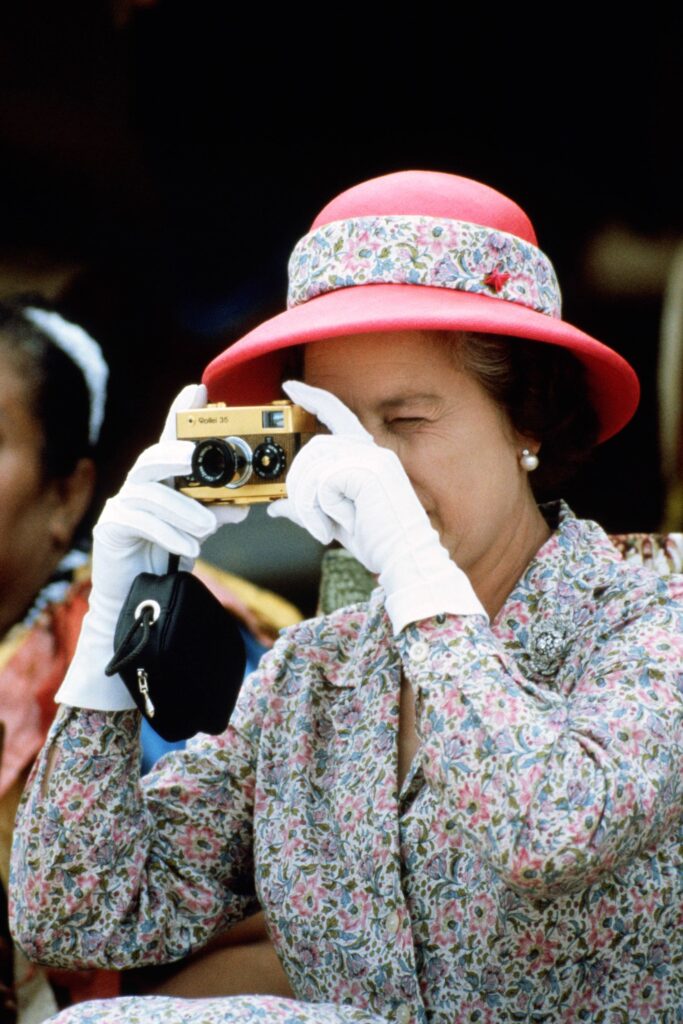
The new Rollei 35AF retains the iconic look of the original (although just slightly larger), while introducing two key updates: electronic auto exposure and laser-based (LIDAR) auto focusing. The new version also ditches the all-metal body for a combination of metal and plastic. Although the new camera has the same iconic knobs on the front, they serve different functions related to the modern electronics. The unusual top-left-mounted film wind lever and bottom-mounted rewind crank were retained. The new Rollei also uses the same film loading system as the original, which involves sliding the back and rear part of the camera off rather than a more common hinged back. (More on film loading later.) While the original Rollei had a collapsible lens that had to be extended to take pictures, the new version’s lens is fixed in place.
Reflecting the new electronic internals, the camera also has a small OLED screen next to the on/off/mode switch that shows a variety of information, including the frame number, the selected ISO, and exposure information.
The Rollei 35AF operates automatically (mostly … discussed later) but also allows fully manual exposure settings. Focusing, however, is all automatic all the time. Film winding is manual, including loading, advancing, and rewinding.
Two versions of the camera are offered: a silver body with black leatherette ($799 US) and a black body with black leatherette ($828 US). I ordered the black version, which I think looks better. Both versions have the Rollei trademark on the front; Mint’s name appears only on the inside of the camera.
Picture Quality
Before getting too far into details of my experience with the camera, here are samples from the first rolls through the camera, taken in a variety of lighting situations on several different film stocks. All of the films were shot at box speed and developed and scanned at home using CineStill’s C41 kit and an Epson V550 scanner.
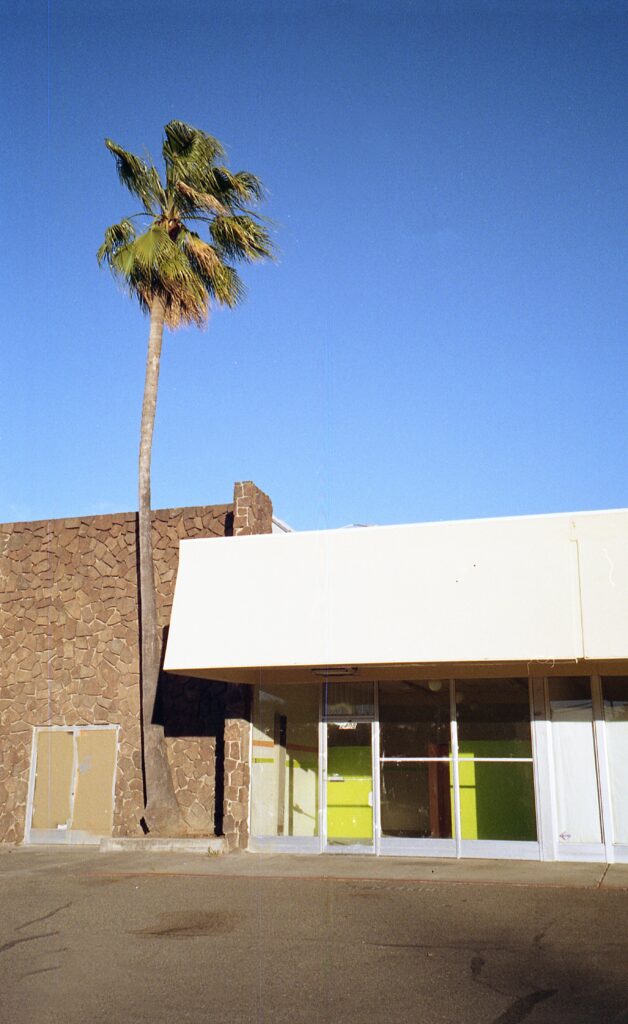
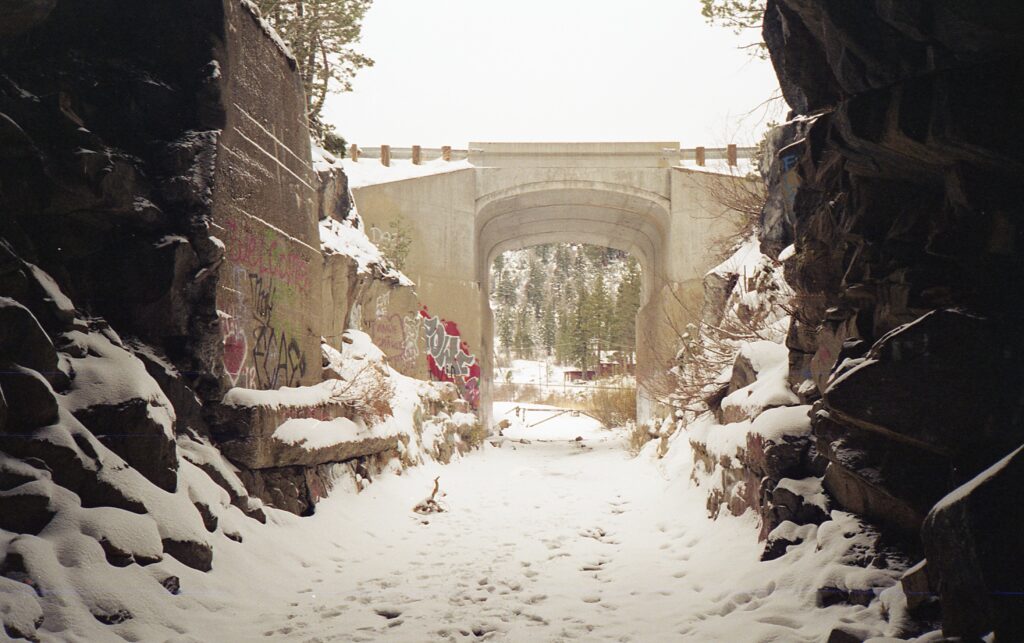
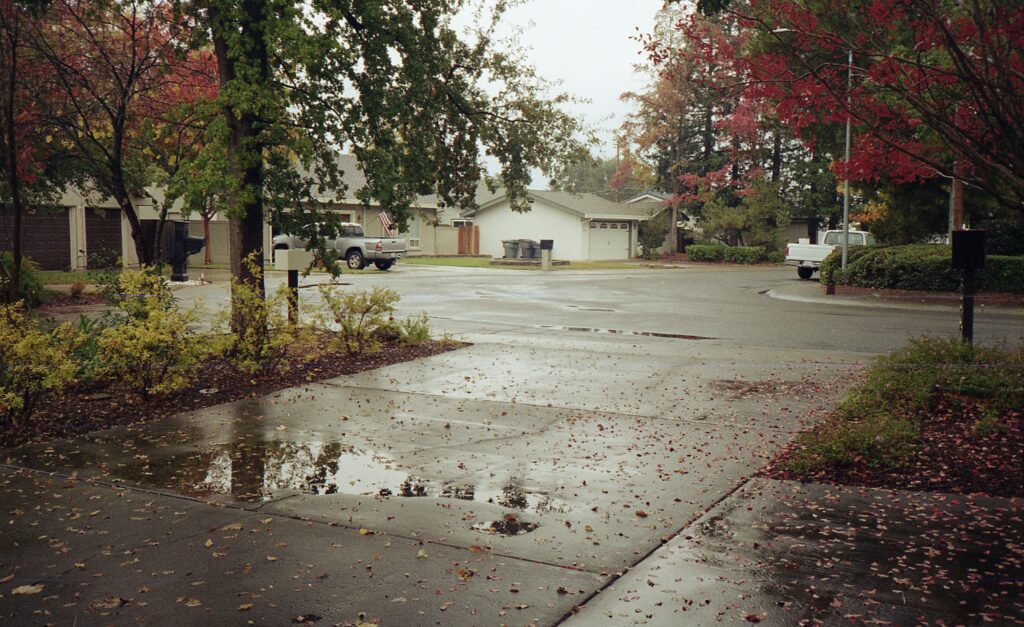



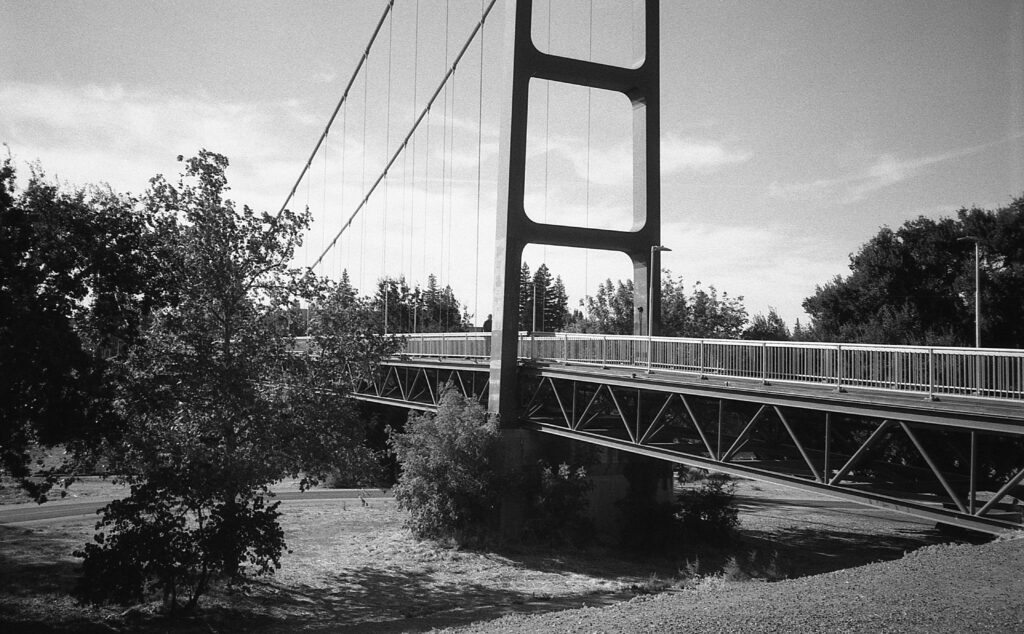
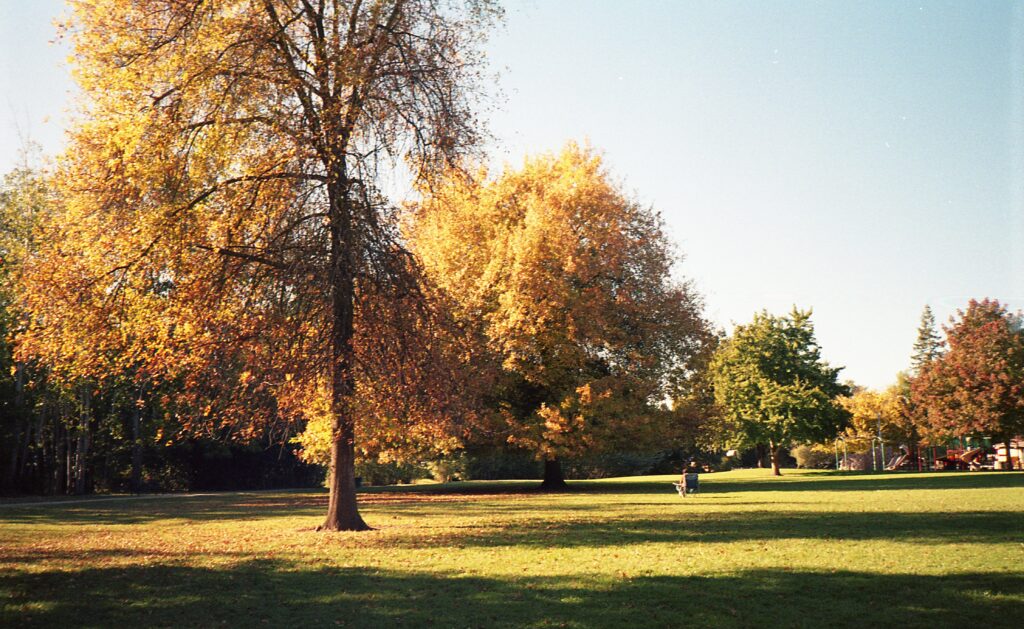
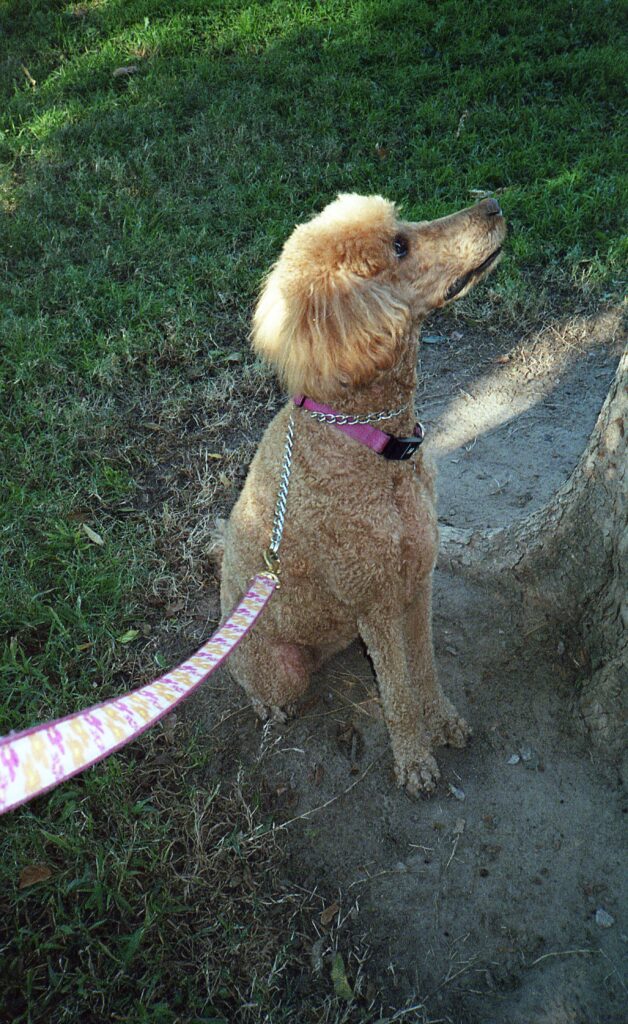
I’ve been very impressed with the photos the Rollei 35AF produces. The autofocus is generally spot on, hitting in probably 95 percent of my pictures. When it hits focus, the images are sharp, with excellent color and contrast. The auto exposure (actually, aperture-priority, not full auto) is quite good.
Laser Focusing Problems
LIDAR focusing sounds cool. Who wouldn’t want lasers shooting out of their camera, measuring focus distance with, well, laser precision? In my experience, however, LIDAR works about as well as the old fashioned non-laser system your old point-and-shoot camera uses. The LIDAR is supposed to be more accurate, and more focused on a single spot in the middle of the frame, but based on my test rolls it’s as hit-and-miss as older systems. It’s hard to tell why the camera doesn’t find focus in some situations, as shown in the samples below. It just misses, even though I’ve been careful to let the camera find and confirm focus before shooting.

When it doesn’t seem to focus correctly, it’s sometimes the result of camera shake, as in the examples below. (More on this issue later.) If you look closely at the image below, you’ll also see two sets of horizontal lines, which I also discuss later.
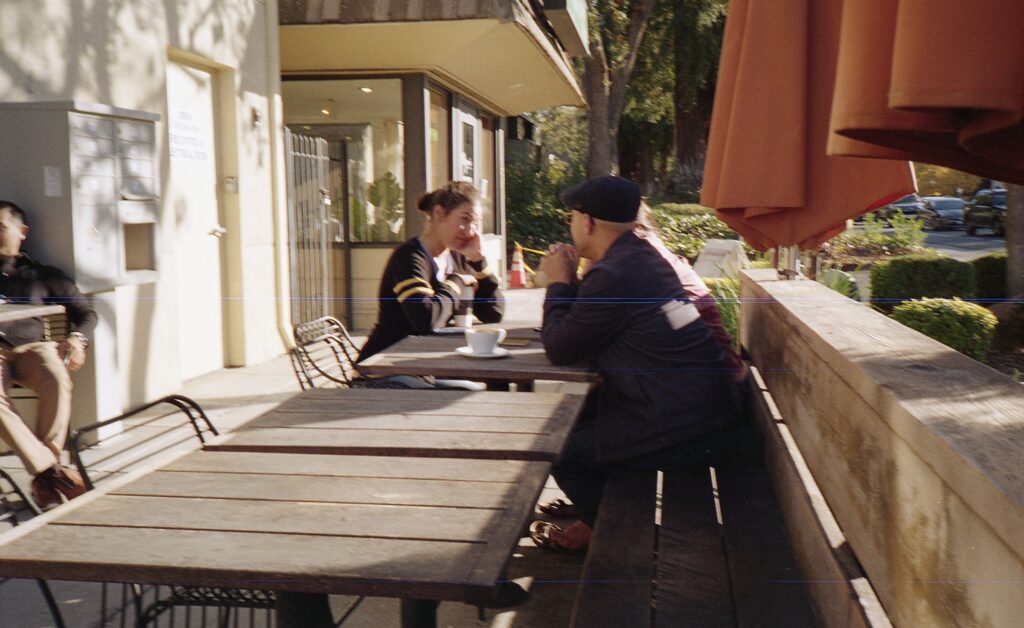
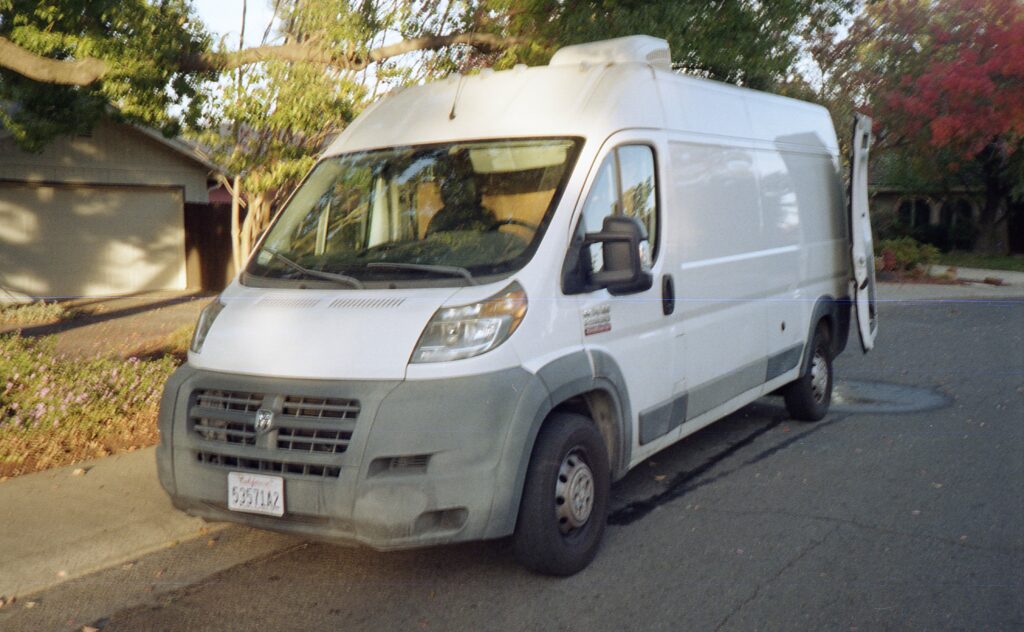
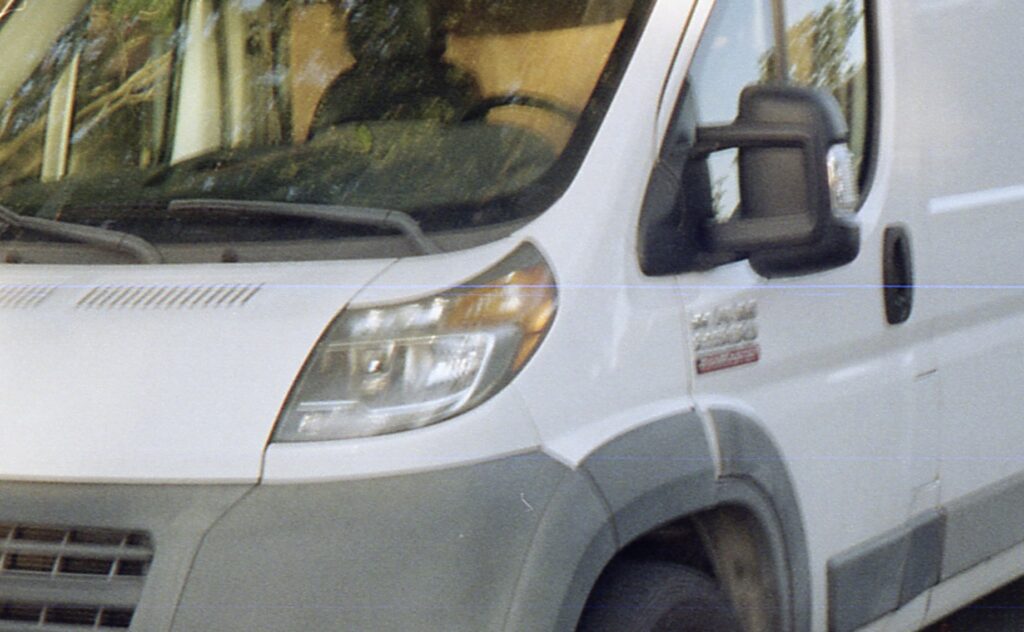
On the plus side, the LIDAR system does do a very good job of focusing through glass. The shot below was taken through the window of a closed store, and the camera hit exactly on the equipment inside.
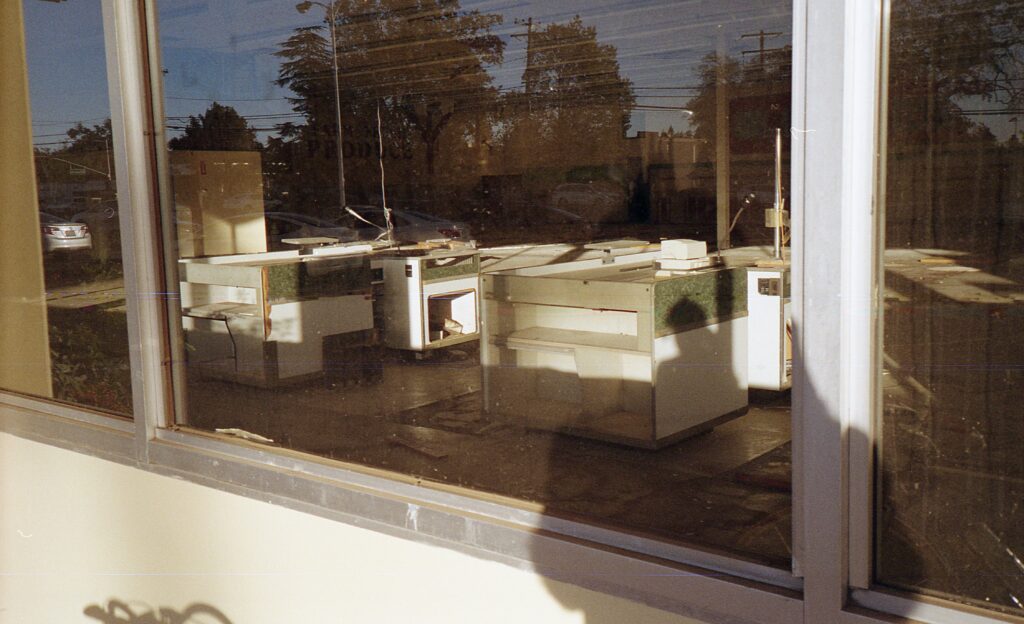
Summary: Don’t buy this camera for the LIDAR. It sounds cool, and when it works it works very well. But in my experience it’s as prone to missed focus as any other reasonably good autofocus system. I honestly think my Yashica T4 hits focus more consistently, although in fairness the Rollei 35AF is spot on and very sharp when it does focus correctly.
And… unlike many older point-and-shoots, the Rollei 35AF does not have a “landscape” or “infinity” setting to make it possible to take photos of distant subjects without being confused by window glass or objects in the foreground.
And… it is possible to estimate very generally where the camera is focusing by listening to the autofocus motor. Distant shots will cause a shorter focusing noise; closer shots will take slightly longer to focus. It’s not exact, but once you get used to listening to the motor it’s easy to spot.
This is Not a Point-and-Shoot Camera!
The Rollei 35AF is marketed by Mint as an “autoexposure” camera, which is mostly true. In full fact, it is an aperture-priority autoexposure camera, which requires the user to select an aperture using one of the dials on the front of the camera. The camera measures the light reflecting off the subject, using a sensor on the body of the camera, and calculates a shutter speed using the film’s ISO (read from the film’s DX coding or input by the user). Sounds simple, but it’s a little more complicated in actual use.
First, it’s helpful to understand that the camera will take a picture even if the scene is too bright or too dark to be properly exposed based on the film speed, the aperture selected by the user, and the range of shutter speeds available in auto mode (1/500th of a second to one second). It’s very easy to take under or over-exposed pictures. For outside shots in the sunshine, I generally used f11 or f16, which would with with film up to the 400 ISO Kodak Ultramax or Tri-X I used for my first test rolls. If you load faster film (800 or 1600 or faster), the camera will try to expose correctly, but it can’t limit the light hitting the film more than f16+1/500th, so your daytime shots are going to be overexposed (unless you manage to put a filter in front of the lens, which Mint doesn’t accommodate since they didn’t put filter threads on the lens).
The camera will tell you if the combination of film speed and aperture won’t work with the range of “auto” shutter speeds, although it should be noted that Mint’s instructions don’t mention this.
Here’s how it works: When you turn the camera ON, the OLED display lights up and for about a second or two shows either “auto” (exposure is within the limits the camera can accommodate) or a circle with a “+” or “-” inside that indicates over or under-exposure and a general indication of how far over or under it is. For instance, if you’re shooting a dimly light scene with slow film and select an aperture of f16, the camera will briefly tell you that the shot will be underexposed. At that point, you turn the camera OFF, select a larger aperture, and turn it ON again. If you don’t get the over or under-exposure indication, you’re OK to shoot… mostly.
I say “mostly” because, as noted earlier, the Rollei 35AF considers any exposure within the range of shutter speeds it possesses to be “OK.” That might mean 1/500th of a second, or it might mean 1 second – in many cases too slow for handheld shots. It doesn’t tell you what speed it selects (although you can intuit it if you’re used to Sunny 16 or using a light meter). It is very easy, particularly in low light situations, to end up with blurred shots, like this one:
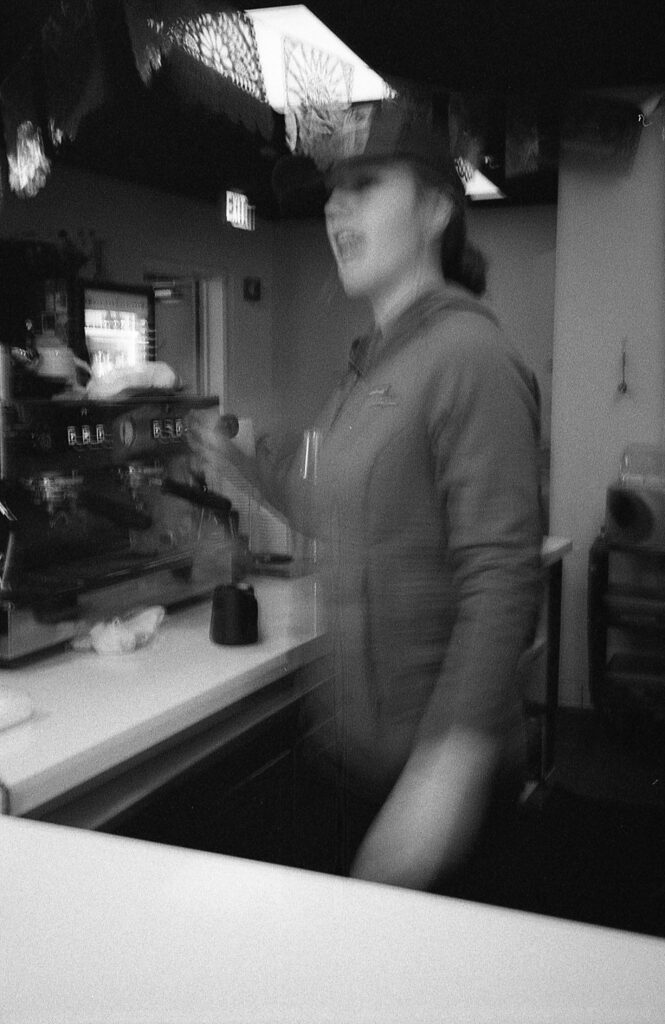
If you want to dial in a proper combination of aperture and shutter speed, you can switch to manual mode and use either the camera’s exposure indicator or an external light meter. If that’s your thing, go for it, but this slows things down a lot and detracts from the “point and shoot” nature of the camera.
More on this later in my suggestions for improvements to a second version of the camera.
Film Loading and Advancing: A Royal Pain
One of the first problems I approached Rollei about was film loading. It’s a royal pain, and far too difficult, at least with the camera I was sent.
Rollei’s instructions and their online video tutorial make film loading look relatively easy, and in fact exactly like loading an original Rollei 35 (which I have and which loads relatively easily). This involves opening the back, placing the film canister in the body on the right, extending the film to the left, and then winding on. Their video makes it look easy.
In my experience, however, the film leader doesn’t stay put in the takeup spool. Instead, it pops out, with the result that the film, transported across the film gate by gears at the top and bottom that mesh with the sprocket holes on the film, doesn’t wind up, and instead ends up as a big, loose spool. And because it’s not wound tightly, it eventually stops moving. One on of my test rolls, despite my best efforts, this no-winding scenario occurred, and the film stopped advancing at the 10th frame of a 24-frame roll. The gears that moved the film kept moving, but because the film was stuck in one place they shredded through the sprocket holes. The camera (and I) thought the film was advancing, but in fact I ended up with 14 frames exposed in the same spot.
I can’t explain why this happens. I loaded a test roll in my Rollei 35S, which appears to have the same loading and takeup system, and it worked perfectly. But loaded as directed my Rollei 35AF fails every time.
Here’s what happened when one roll bunched up in the takeup area:
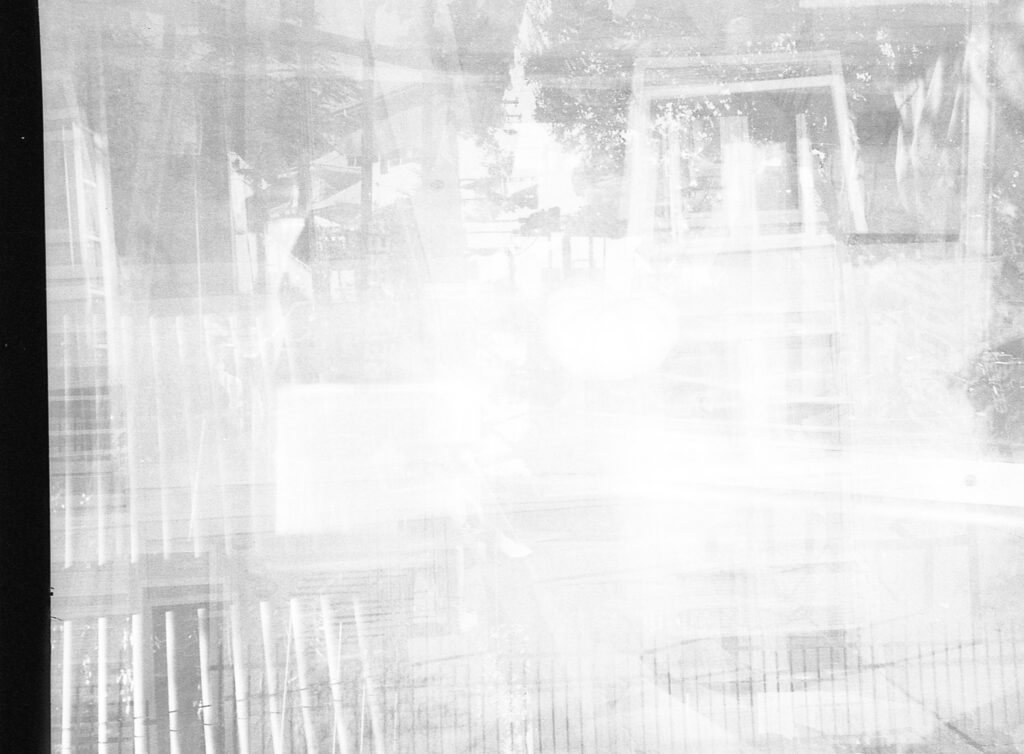
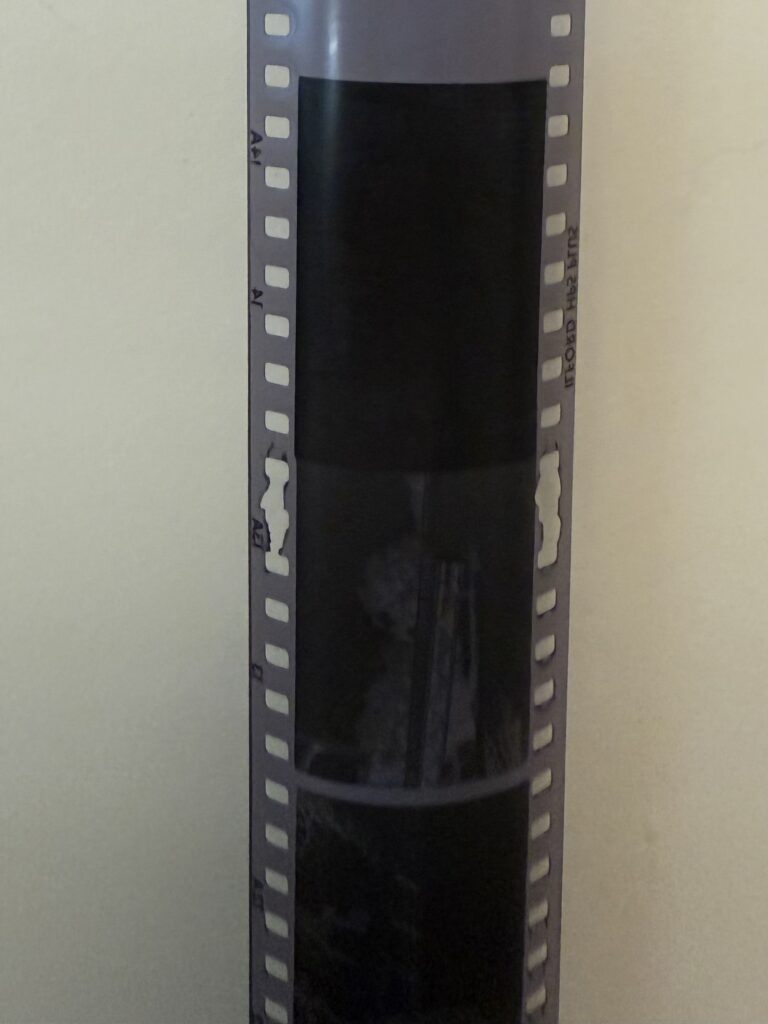
The solution I’ve found is to load the film differently from the way Mint describes:
1) Pull the film leader from the canister slightly and insert the end into the take-up spool.
2) Wind the film with your left had before laying it across the film gate (you’ll hold the film canister in your right hand). Hold the leader in place to make sure it stays put and that the film is winding on the takeup spool. Do at least two film advances to wrap the film around the takeup spool.
3) With the film wound tightly around the takeup spool, lay the film across the film gate, making sure that the sprocket holes on the film engage with the gears on the camera, and close the film tensioner over the film. Fit the canister into the place on the righthand side (note that it can be a very tight fit with some films). Give it another film advance to make sure everything is working.
4) Replace the back and wind on to frame “0” or “1” (I’ve found that frame 0 exposes properly) and start shooting.
Film Rewinding: Also a Pain
I’ve rewound hundreds and hundreds of rolls of film in dozens – perhaps hundreds – of cameras. The Rollei 35AF stands out among all those as having the most difficult rewind action, requiring far more effort than any other I’ve ever used, to the point where it feels like something is wrong and the film is about to be torn.
I can’t explain why this is, and Rollei’s support staff hasn’t offered any explanation. The process is very straightforward: at the end of the roll, flip the rewind lever on the front of the camera up, unfold the rewind lever on the bottom, and turn the lever to rewind. Simple enough, but it still feels like something is wrong. In some cases, it has taken a two-finger approach to apply enough torque to keep the film moving.
All this stress on the film apparently leads to another problem I’ve had with the camera: scratched film.
Scratched Film
After the first few rolls through the camera, severe scratches began appearing on the film, extending horizontally across the frames. This happened on various types of film, both in rerolled canisters (I bulk load black and white film) and in brand new canisters of color film. Here’s a sample:
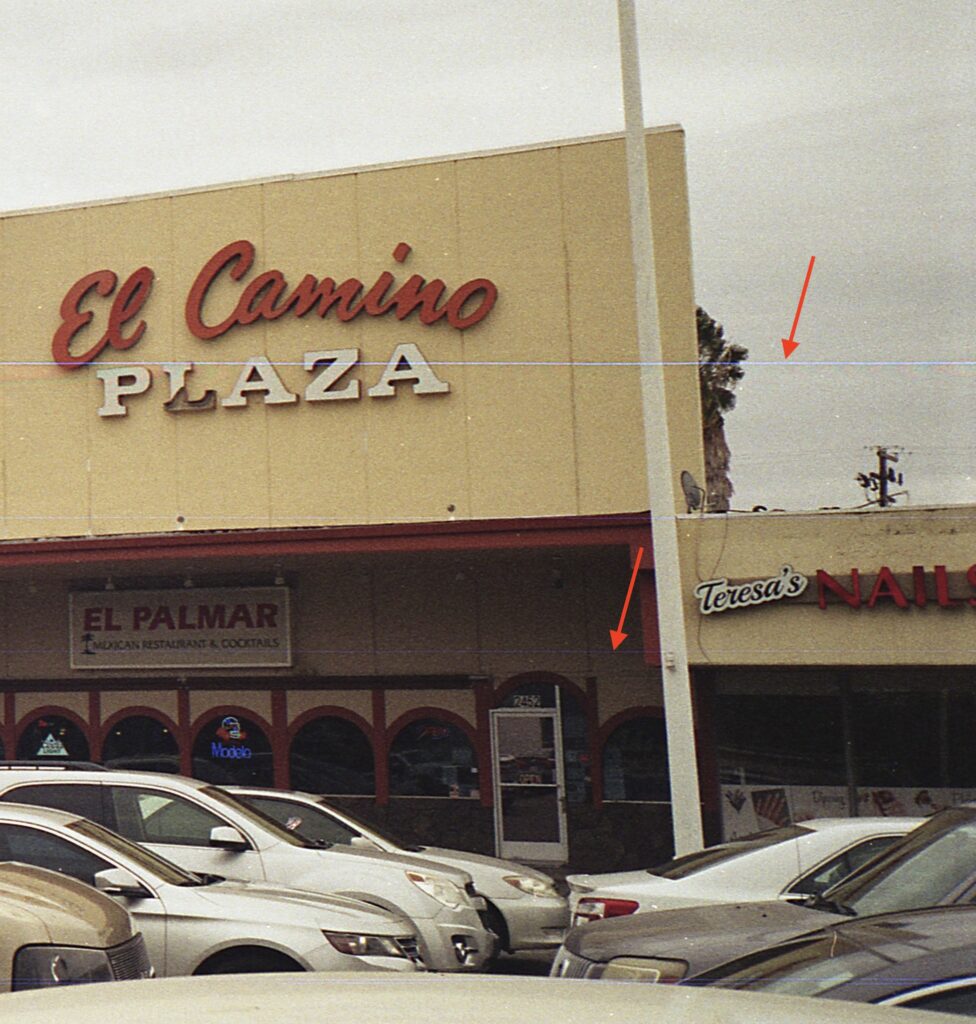
The lines appeared in slightly different locations, but generally in the middle third of the frame. Both black and white and color film were affected.
My assumption was that something inside the camera was creating the scratches, probably during the rewind process when the film was apparently stressed and more likely to scratch. I contacted Rollei tech support via email, and they recommended the following:
“There may be dust, dried marks, or protrusions in the following areas; please use a lens cloth or leather to polish and smooth the surface to ensure there are no protrusions and to prevent scratching the film. We suggest using the leather strap provided to polish these parts:”

That made sense, so I followed their advice and rubbed these areas (which are all plastic) with the leather strap. Scratches still occurred. I upped the polishing game with an extremely fine (10,000 grit) polishing paper; scratches still occurred (still changing location a bit, as noted above). Film shot in other cameras and put through the same developing/scanning process, by comparison, had no scratches. The Rollei 35AF remained the culprit in my mind.
Finally, I took a close look at the inside of the camera and noted that the area between the lens and film is coated with a fuzzy, felt-like material (undoubtedly to stop light scatter). Thinking that tiny fragments of that material might be getting caught between the film and the camera during the very stressful winding process, I carefully wiped this area with a dry microfiber lens polishing cloth.
Cleaning the felt-ish area seems have solved the problem, and the last 2-3 rolls have been scratch-free.
Flash Photography
The Rollei 35AF comes with a built-in flash that works well in settings where the subject is not too far from the camera. Switching on the flash is easy–just rotate the Mode dial on the top of the camera one position farther and “on” to the “flash” position.
At that point, things get a little more difficult.
First, Mint’s instructions recommend using +2 exposure compensation (controlled on one of the front dials) when the flash is used. It’s not clear to me, given that this is basically an electronic camera, why +2 compensation can’t be invoked automatically in flash mode, but for now it’s not. Perhaps with a future edition of the camera or its firmware?
Second, the camera (and the instructions) don’t provide any guidance on which aperture to select other than to “Use larger apertures like f/2.89 or f/4.0 for a longer flash range indoors.” It would be helpful to have some sort of guide that links aperture to distance-to-subject. As is, the camera will happily let you set the aperture at f16 when using the flash, resulting in underexposed photos.
Mint’s instructions do note that, “The flash will adjust its intensity based on the subject’s distance for optimal lighting.” In my experience, the camera doesn’t do this. .
Fully automatic point-and-shoot cameras get around this problem by setting both aperture and shutter speed, and by in some cases adjusting flash intensity. But those cameras control all the variables; the Rollei 35AFG doesn’t.
A couple of examples of when the camera got it right and wrong:
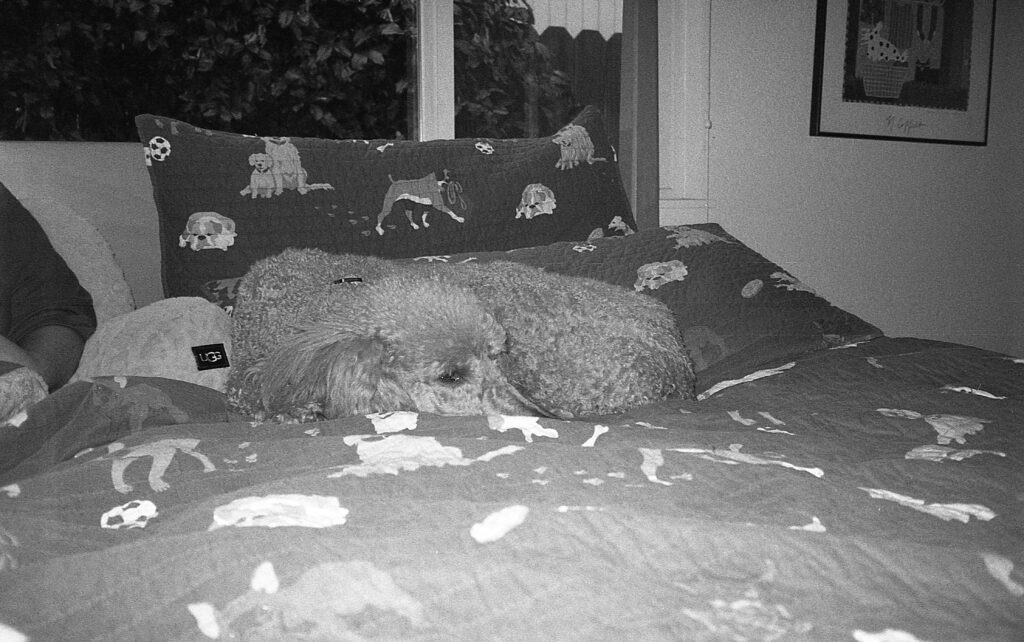
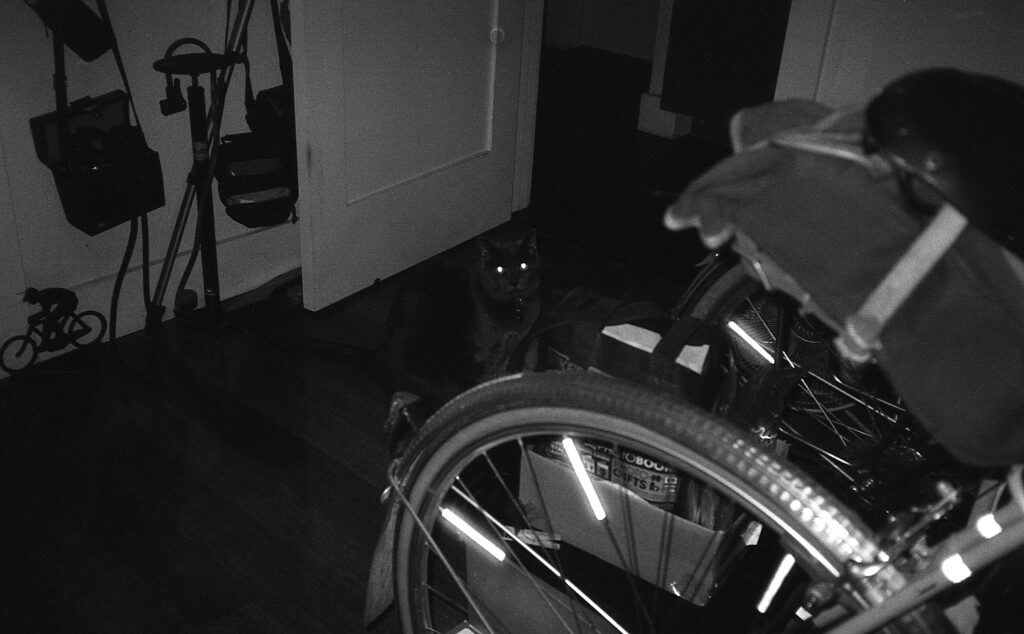
Other Issues
A few other issues with the camera:
Film winding feels very rough. Without film, the advance lever moves smoothly. With film loaded, the lever feels very rough, so it seems there is some problem created by the interaction of film and camera. The only real problem I’ve had with the film winding is discussed above, and I think that was the result of improper operation of the takeup spool. Still, it detracts from the feel of using the camera.
Replacing the film back after loading film is more difficult than it should be. It gets easier with practice, but I’ll note that the original Rollei 35 is not as difficult to close.
The cavity where the film canister goes is very tight. Some reviewers have found that plastic canisters won’t fit. I haven’t had that particular problem, but some canisters feel like they don’t quite fit. A tiny but more room for the canister would be appreciated.
At one point, my camera’s shutter button stopped working. At about shot 20 on a 24-shot roll, the film advanced properly and the shutter button popped up into the “ready” position, but when it was pressed the shutter did not fire. This lasted for the rest of the roll. For some reason, this started working again the next morning after I let the camera sit overnight. Mint’s tech support suggested that I wasn’t advancing the film correctly, which most definitely is not the case.
Suggestions for Version 2
Mint, if you’re reading, here are a few suggestions for a Version 2 of the Rollei 35AF:
- Provide better information before shooting a photo. Rather than just indicate “auto” for a shot within the camera’s shutter speed range, show the selected speed on the OLED screen–or something like “slow” for a shutter speed that would be too slow for handheld shooting. This would let the photographer know ahead of time to select a different aperture.
- Improve the film loading and rewinding experience. Look again at the original Rollei and figure out how that camera manages to wrap up film properly and implement it in Version 2. Figure out what is creating the resistance in the camera during rewinding and fix it. Make it easier to fit a range of film canisters into the
- Improve the film winder. Figure out what is making the film advance feel so rough and fix it.
- Perform better quality control to ensure that whatever could be causing scratches on the film is fixed before the camera leaves the factory. You know what my idea is about the cause of the scratches.
- Provide better information about autofocus. This may be an unfair comparison, but my Fuji GA645zi provides a readout in the viewfinder showing the distance to subject. Perhaps some version of this (even something simple like the familiar “head/group/mountain” icons) if a detailed readout won’t work?
- Make it easier to refit the back to the camera after loading film. Do the tolerances need to be so tight?
- Expand the instruction manual to include better information about the OLED display and how the selection of shutter speed works in auto mode.
- Expand the instruction manual to provide more information about shooting in flash mode–in particular, how to select a proper aperture.
- Integrate the flash mode so that the camera automatically selects a “+2” exposure, rather than making the user select this. The need for the “+2” setting is mentioned only once in the instruction manual; you have read it very carefully to find that guidance.
- Add threads to allow the use of filters. The fixed lens on an $800 camera at a minimum needs to be protected with a UV filter. (I added a 3D-printed filter adapter to mine–contact me through 35MMC if you would like the file to print your own.)
- In combination with #11, move the exposure sensor
Conclusion
After ten-plus rolls of film and hundreds of photos taken, I’m still ambivalent about the Rollei 35AF. It’s a very pretty camera that often takes very nice pictures. But it suffers from ongoing use issues (loading, film advance, missed focus, etc.). I’m getting used to the rough film winding, and with the method described earlier film loading is better (but still not as good as with the original Rollei). I’m accustomed to the somewhat lackluster LIDAR focusing, and I’ve adjusted my expectations for sharp focus. And I’m getting better at replacing the back after loading film.
If I were planning a vacation right now, I would not choose the Rollei 35AF–too many issues that make the camera unreliable and too many missed shots. Instead, I would pack a Yashica T4, or an Olympus mju, both of which are more reliable, easy to use, and produce great photos at least as often as the Rollei 35AF.
In summary, I’m getting used to this very pretty, very incomplete camera.
I look forward to Version 2 – and perhaps to a trade-in program from Mint for buyers of Version 1!
Share this post:
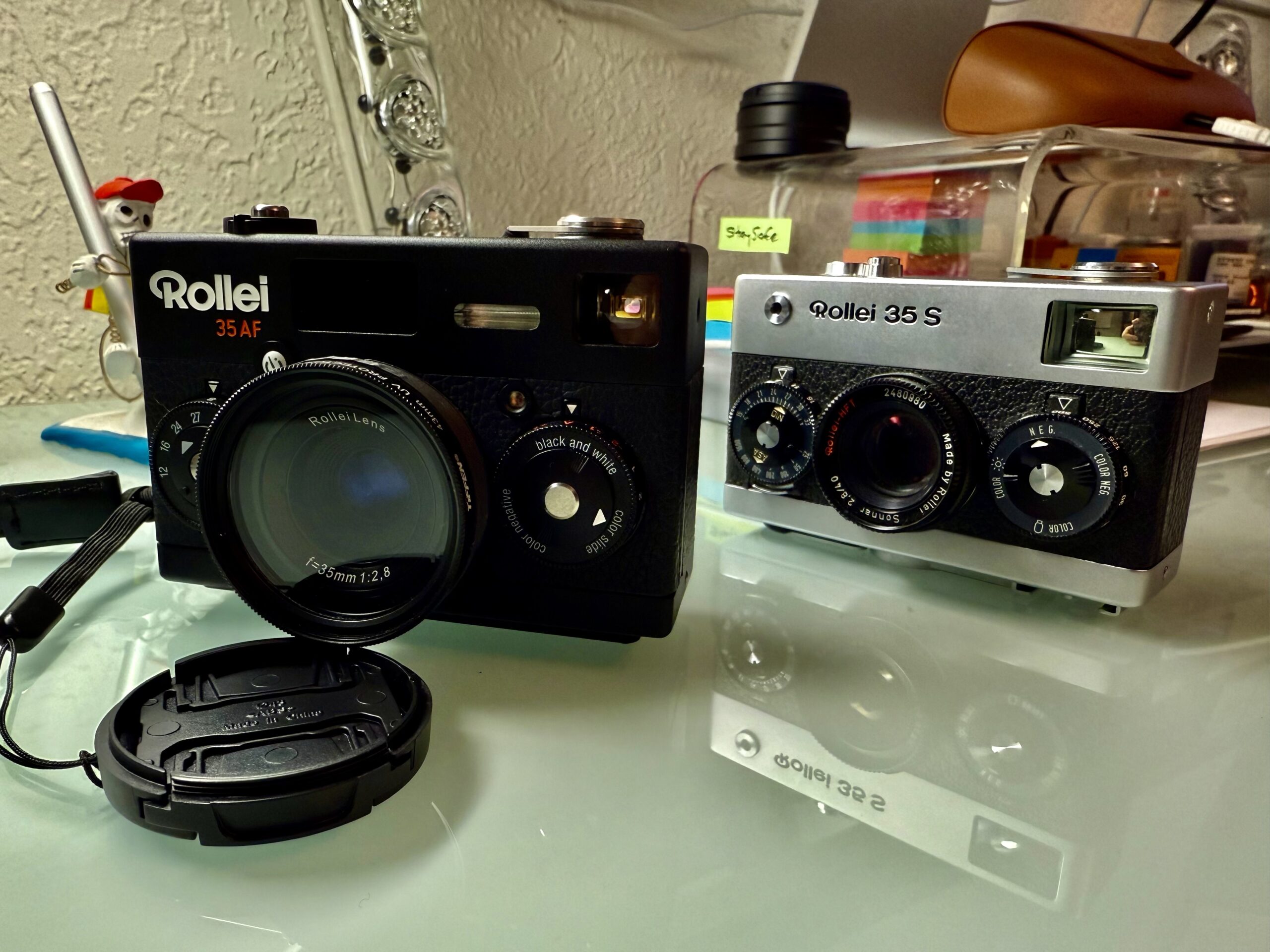
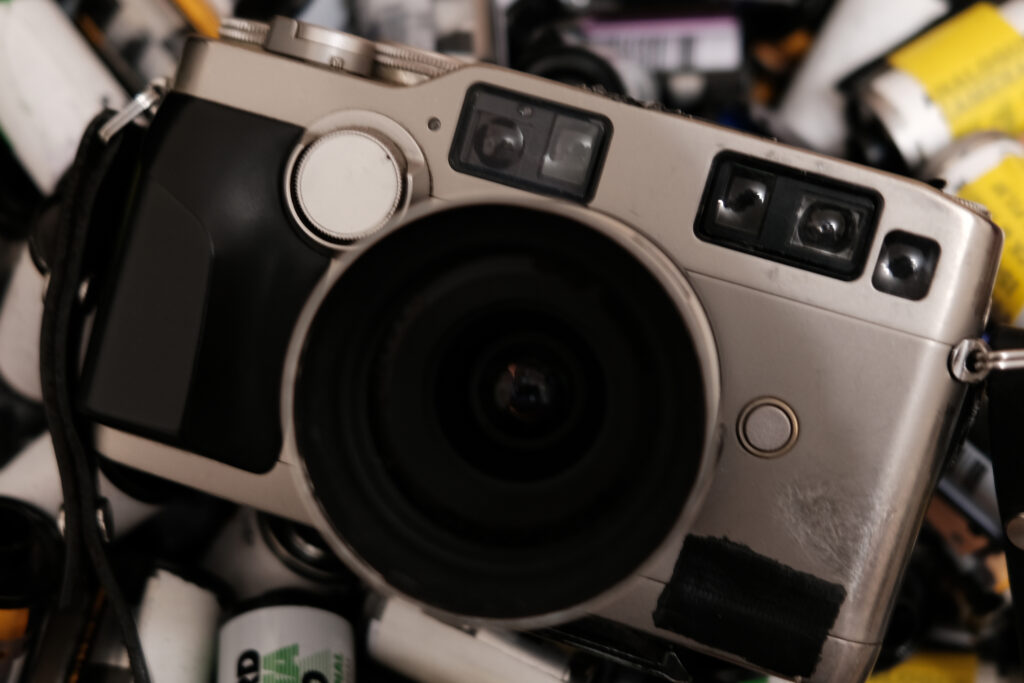
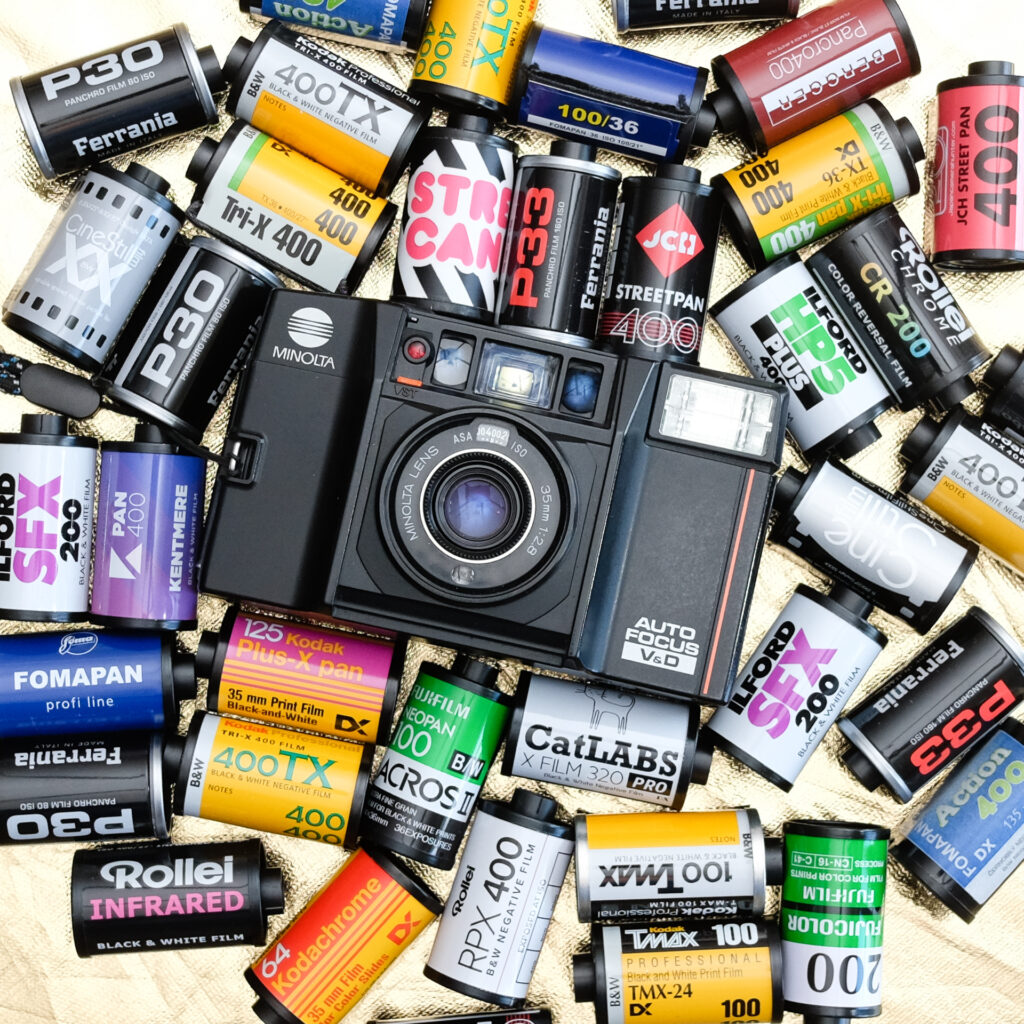

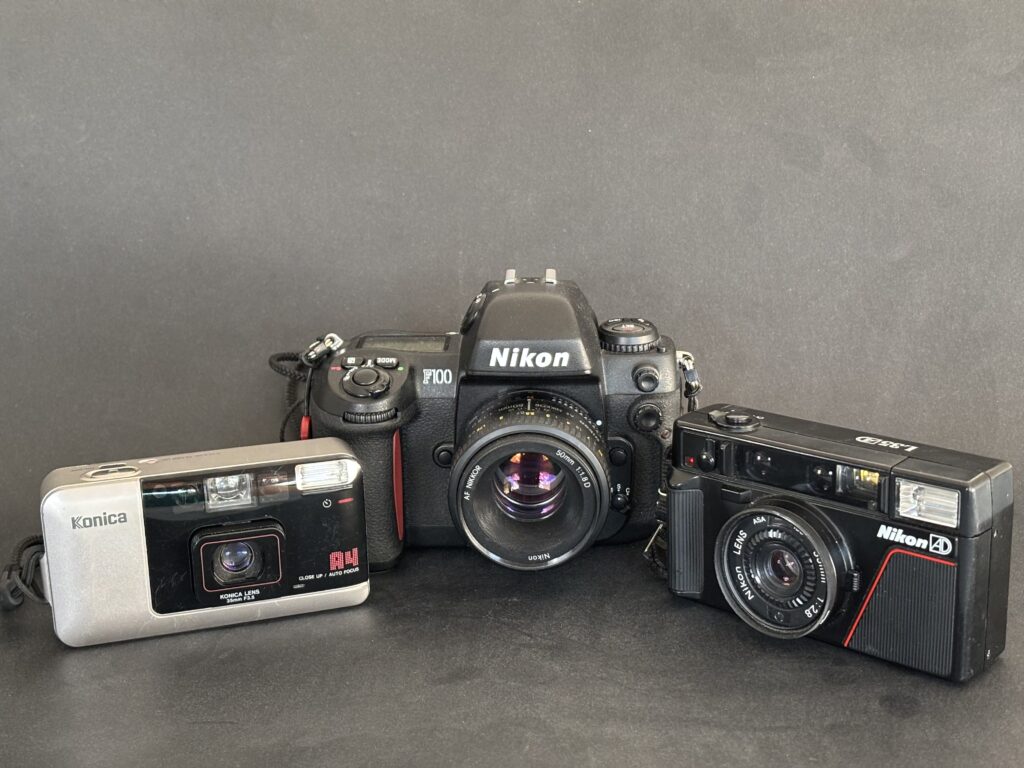




Comments
Steviemac on Rollei 35AF – My Love/Hate Relationship – Problems Encountered and Lessons Learned
Comment posted: 13/01/2025
Martin on Rollei 35AF – My Love/Hate Relationship – Problems Encountered and Lessons Learned
Comment posted: 13/01/2025
Thanks for a reflected insight. Great read the makes me hope that I will develop a better relation with mine after seeing the pics from roll 1.
Best wishes!
Comment posted: 13/01/2025
Comment posted: 13/01/2025
SteveB on Rollei 35AF – My Love/Hate Relationship – Problems Encountered and Lessons Learned
Comment posted: 13/01/2025
Thanks for posting about your experience with this camera. I think I'd buy a Pentax 17 instead of this...
john s on Rollei 35AF – My Love/Hate Relationship – Problems Encountered and Lessons Learned
Comment posted: 13/01/2025
Comment posted: 13/01/2025
davesurrey on Rollei 35AF – My Love/Hate Relationship – Problems Encountered and Lessons Learned
Comment posted: 13/01/2025
Let’s hope that MINT take this on board as positive feedback.
Eric on Rollei 35AF – My Love/Hate Relationship – Problems Encountered and Lessons Learned
Comment posted: 13/01/2025
Greg Hammond on Rollei 35AF – My Love/Hate Relationship – Problems Encountered and Lessons Learned
Comment posted: 13/01/2025
P.S. Loved the California images. I know that El Camino Plaza, and you’ve reminded me that I wanted to get back to it with some film stock.
Steve h on Rollei 35AF – My Love/Hate Relationship – Problems Encountered and Lessons Learned
Comment posted: 13/01/2025
Curtis Heikkinen on Rollei 35AF – My Love/Hate Relationship – Problems Encountered and Lessons Learned
Comment posted: 13/01/2025
Russ Rosener on Rollei 35AF – My Love/Hate Relationship – Problems Encountered and Lessons Learned
Comment posted: 13/01/2025
Gary Smith on Rollei 35AF – My Love/Hate Relationship – Problems Encountered and Lessons Learned
Comment posted: 13/01/2025
Alexander Seidler on Rollei 35AF – My Love/Hate Relationship – Problems Encountered and Lessons Learned
Comment posted: 14/01/2025
in the 2020ies. I also don´t share your opinion that this is an expensive camera (although that is a lot of money) How many do they sell ?
several 100 per year ?
You did some good shots. I hope you can make friends with your Rollei.
Tom Perry on Rollei 35AF – My Love/Hate Relationship – Problems Encountered and Lessons Learned
Comment posted: 14/01/2025
I think the initial cost of this camera was too high - if I'd paid that money and it started chewing my films and exposing single frames, I would have asked for a refund. Well done on sticking with it and writing this piece too.
Huss on Rollei 35AF – My Love/Hate Relationship – Problems Encountered and Lessons Learned
Comment posted: 14/01/2025
I went through that with my new 2022 Leica M6 which scratched film. FYI some owners are reporting that the new M6 is STILL scratching film!
Comment posted: 14/01/2025
Comment posted: 14/01/2025
Comment posted: 14/01/2025
Matt on Rollei 35AF – My Love/Hate Relationship – Problems Encountered and Lessons Learned
Comment posted: 14/01/2025